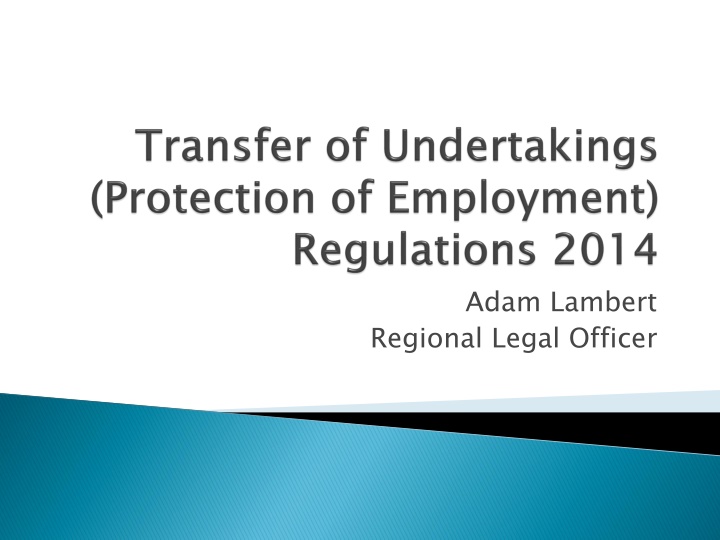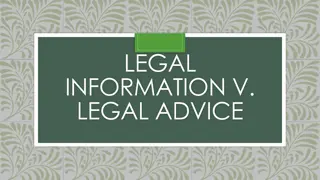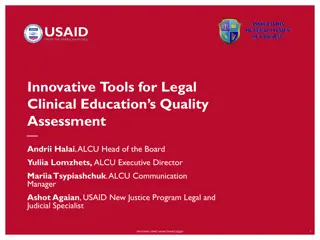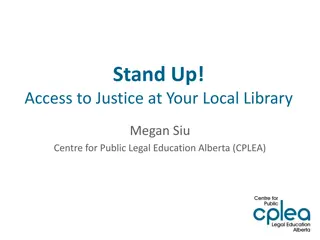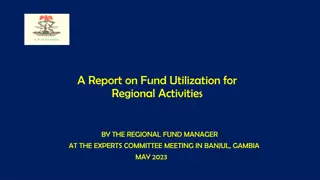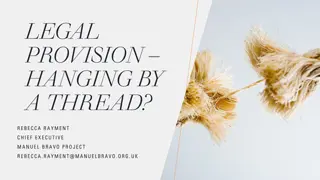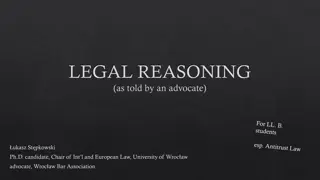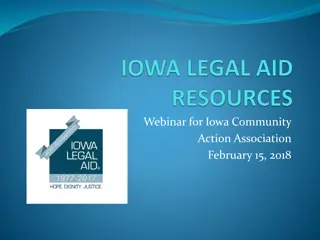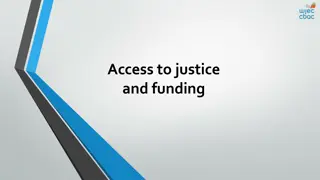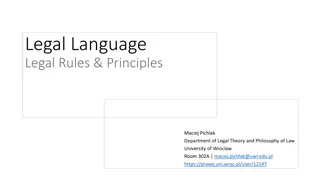Adam Lambert Regional Legal Officer
Providing insight into the Transfer of Undertakings (Protection of Employment) regulations to safeguard employees in case of company transfers. Learn about automatic employment transfer, protection against dismissal, consultation rights, and more. Discover the intricacies of TUPE and its impact on contractual obligations and employee rights.
Download Presentation

Please find below an Image/Link to download the presentation.
The content on the website is provided AS IS for your information and personal use only. It may not be sold, licensed, or shared on other websites without obtaining consent from the author.If you encounter any issues during the download, it is possible that the publisher has removed the file from their server.
You are allowed to download the files provided on this website for personal or commercial use, subject to the condition that they are used lawfully. All files are the property of their respective owners.
The content on the website is provided AS IS for your information and personal use only. It may not be sold, licensed, or shared on other websites without obtaining consent from the author.
E N D
Presentation Transcript
Adam Lambert Regional Legal Officer
Aim of legislation is to provide some protection in the event of a transfer of the undertaking in which an employee works 3 main protections: Automatic transfer of employment, terms and conditions (except pensions) Safeguards against dismissal and changes to T&Cs Information and consultation rights BUT TUPE protection is weak and has various loopholes
Standard transfer where there is a transfer of an economic entity which retains its identity Service Provision Change where activities are carried out by another company (e.g. outsourcing) Organised grouping of employees which has as its principal purpose the carrying out of activities for the client Intention must be that activities will continue in the medium to long term in fundamentally the same way Activities must not consist mainly of the supply of goods
Transfers involving the administrative reorganisation of public administrative authorities (e.g. intra-NHS transfers) Insolvency proceedings
Employees and apprentices must be permanently assigned to the undertaking which transfers Percentage of time spent working on undertaking is influential but not determinative
Effect of TUPE is that the contract with the old employer ( transferor ) is made with the new employer ( transferee ) on the date of transfer Continuity of service is preserved Excludes occupational pension scheme rights (but includes accrued pension rights) Terms derived from collective agreements are static at the point of transfer where the new employer is not part of the collective bargaining process
Information about employment liabilities must be provided by the transferor to the transferee at least 28 days prior to transfer: Employee names, roles, ages, length of service, T&Cs, collective agreements Disciplinary information Information regarding employee grievances within the last 2 years and any court claims against the employer within the last 2 years or which the employer reasonably believes may be lodged. The union is not entitled to receive Employee Liability Information
Must commence long enough before the transfer for meaningful consultation to take place Duty lies with transferor but dependent on the transferor receiving relevant info from transferee Appropriate representatives of affected employees (recognised TU/elected employees) must be informed about: The date of the transfer, the identity of the transferee and the reasons for the transfer The legal, economic and social implications and measures expected to be taken by the outgoing and incoming employers measures letter Details of any agency workers used by the employer Affected employees may include employees of the transferor and transferee not transferring themselves
Collective consultation on redundancies and post-transfer changes to T&Cs may commence pre-transfer if outgoing employer agrees Consultation must be with a view to reaching agreement Failure to inform or consult can result in a protective award claim against the transferor and transferee in the Employment Tribunal BUT special circumstances defence exists if not reasonably practicable Protective award up to 13 weeks pay per employee; must be lodged within three months minus one day of transfer
An employee can object to a transfer, in which case their employment will terminate as though they have resigned No entitlement to redundancy or severance pay or, in most circumstances, to bring a claim for unfair dismissal Not much of an option!
Variations to T&Cs are permitted post-transfer where: The transfer is not the sole/principal reason for the variation OR The transfer is the sole/principal reason for the variation but there are Economic, Technical or Organisational Reasons entailing a change in the workforce (restructuring) OR The terms derive from collective agreement (in which case they can be varied after one year provided the overall terms are no less favourable) If above criteria not satisfied, any changes are void and an employee s rights in this regard cannot be waived As with any change to T&Cs, requires consultation and employee agreement/change permitted by contract OR dismissal and re- engagement (in which case dismissal would be for redundancy or SOSR and subject to usual fairness test)
Economic financial reasons very broad Technical change in technology/process Organisational change in structure of business Entailing a Change in the Workforce Headcount (reduction) Job function (has to be more than trivial/job title) Job location Cannot be a matter of harmonisation
Dismissals where the transfer is the sole/principal reason are automatically unfair BUT 2 years service required for a claim Dismissals for an ETO reason entailing changes to the workforce are potentially fair Reg 4(9): If the transfer involves a substantial change in working conditions to their material detriment, an employee is entitled to treat themselves as dismissed. Employee must make clear that resigning for this reason and can do so before or after the transfer A tribunal will balance the effect of the change on the employee with the employer s business reasons and the extent of consultation Such a course of action requires careful consideration and involvement of your Regional Officer
Recognition transfers if the organised grouping of resources or employees maintains an identity distinct from the remainder of the transferees undertaking Nothing to stop de-recognition of a voluntary agreement post-transfer
Seek early and regular meetings with the outgoing employer, noting their duty to inform and consult Safely retain contracts of employment, employee handbooks, collective agreements and any other documentation evidencing T&Cs Conclude negotiations over T&Cs pre-transfer date and press for all benefits to be accepted as contractual With the incoming employer: Seek to negotiate dynamic post-transfer agreement on collective T&C negotiations Seek agreement that post-transfer reduction in T&Cs/changes to hours and workplaces will give rise to an entitlement to redundancy pay If incoming employer offers new T&Cs to undermine collective bargaining, argue unlawful inducement (TULRCA Section 145(B)) High membership density by far the safest way of protecting jobs and High membership density by far the safest way of protecting jobs and T&Cs T&Cs
